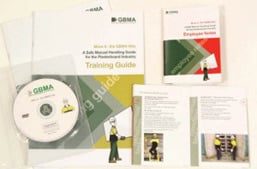
Real Cost of Workplace Injuries: A Case for Boosting Workplace Safety
 Since the early 1990's, most companies have got their act together and decreased their workplace injuries (see chart). After all, it's a no-brainer that workplace safety accidents cost businesses lots of money each year. And from a human perspective, it's always a good idea to look after people.
Since the early 1990's, most companies have got their act together and decreased their workplace injuries (see chart). After all, it's a no-brainer that workplace safety accidents cost businesses lots of money each year. And from a human perspective, it's always a good idea to look after people.
Yet, many companies around the globe often forget about the real costs of an accident preferring to cut spending on safety training and equipment.
Let's take a look at some different viewpoints on the real cost of workplace safety to an organisation:
- The Liberty Mutual Workplace Safety Index report states that improving workplace safety is a key strategy for reducing direct costs resulting from workplace injuries. The direct costs that are stripping businesses of their profits include medical expenses, workers’ compensation payments and costs for legal services. Direct costs are just the beginning of the ‘price’ of an unsafe working environment. Workplace accidents trigger a range of indirect costs including repairs to damaged equipment and property, hiring and training of replacement personnel, as well as costs associated with lower employee morale and absenteeism that is common in a work site that is considered unsafe.
- While across the Pacific Ocean, Ian Woods, a senior business analyst at AMP Capital Investors was quoted as at a Safe Work Australia event that “From an investors’ perspective, we actively consider OH&S performance in our investment decisions, as we believe it is a good measure of management quality in many high-risk industries". Woods argues that investors now cannot ignore the cost of workplace injury as it is passed on to Australian employers. The average workplace injury costs 6 percent of profit. In the construction industry, the total workplace injury costs borne by workers, employers and the community is equivalent to a staggering 98 percent of the industry’s operating profit.
- While Professor Patrick Hudson, based at Delft University of Technology in the Netherlands was also quoted as saying “I have an estimate that a company may be losing up to 10 per cent of its turnover as a result of poor OHS and E (occupational health, safety and environment) performance...when you have a shutdown, you lose production, and you just add it up,” Prof. Hudson said
Gary Gregg, executive vice president of Liberty Mutual's Commercial Markets sums it all up by remarking "There is a clear link between workplace safety and a company's performance".
But who is really responsible for workplace safety?
Research undertaken by Missouri Employers Mutual Insurance revealed that 95. 7% of those interviewed stated that the responsibility for creating a safe work environment belongs to management.
The bottom line is that companies need to assess their risk situation and to educate employees about how to keep themselves safe.
For organisations with a profit and humanitarian focus, education and safety training video packages are a wise investment in reducing business risk since they protect the most important business asset of all. . . human capital.
